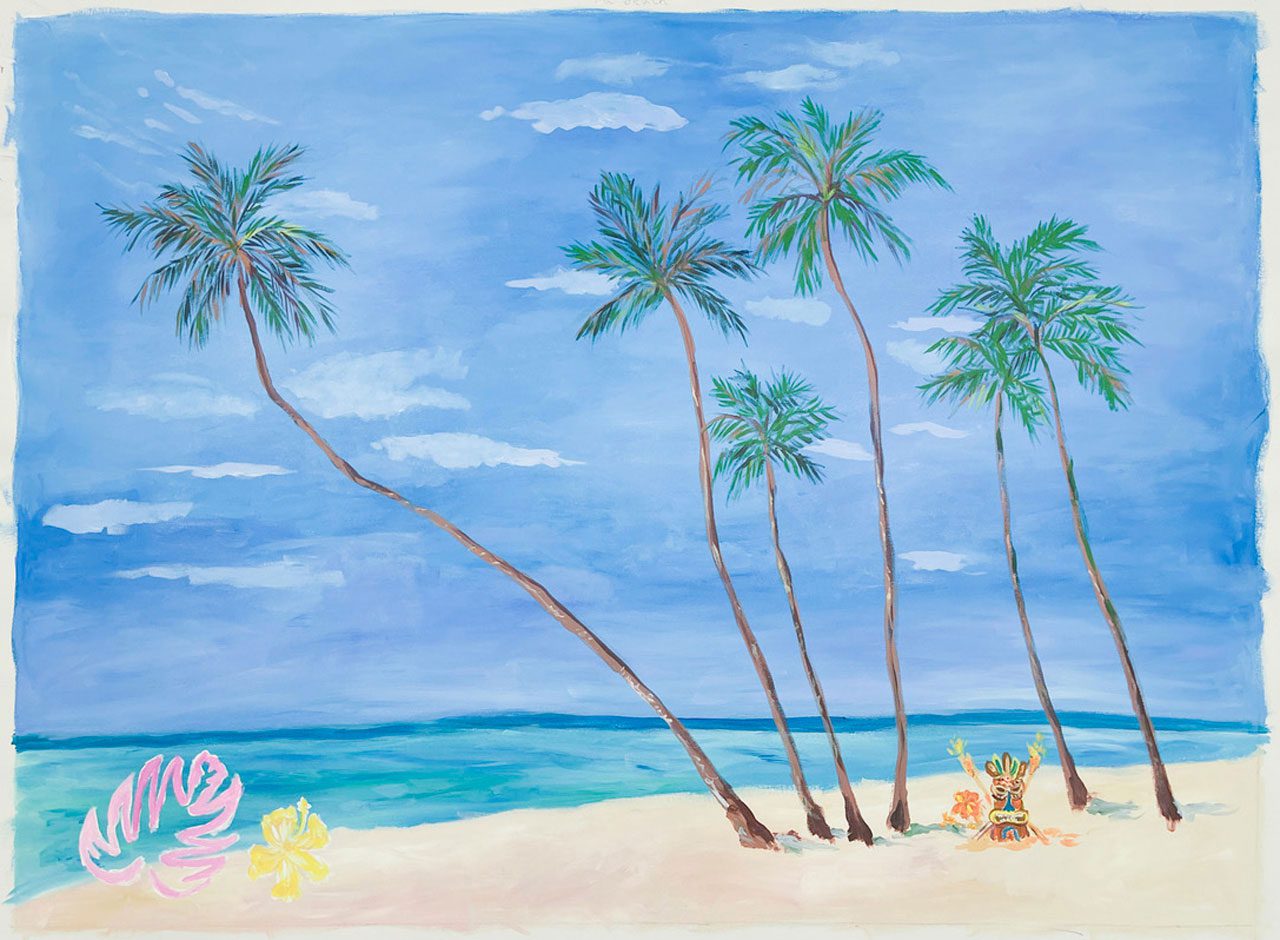PREVIEW: Karen Kilimnik
In a diverse practice that draws upon the tradition of Romantic painting, Karen Kilimnik utilizes painting, drawing, collage, photography, video and installation to produce nuanced and playful observations of historical codes and symbols. Reveling in both mass and high culture, George Stubbs, Jean-Baptiste Oudry and the ballet are as important for Kilimnik as The Avengers, Kate Moss and pop music, forcing such distinctions to collapse into her own specific mélange of cultural influence and production.
By Efi Michalarou
Photo: Gladstone Gallery Archive
With 30 paintings spanning the period from 2008 to 2024, Karen Kilimnik’s debut exhibition at Gladstone Gallery showcases the artist’s radical, fantastical compositions of tropical beaches, coastal landscapes, and floral forests. Kilimnik’s work blends the lively luminosity of Raoul Dufy’s seaside vistas and regattas with the captivating charm of vintage travel brochures and the adventurous spirit of Biggles English adventure stories. One glittering seascape features the surreal juxtaposition of Sopwith Camels circling overhead while submarines lurk offshore—a vision that underscores the impossibility of such a place existing and highlights the magical, spell-like quality of Kilimnik’s art. Depicting a kind of mental nomadism, Kilimnik’s scenes—from kaleidoscopic gardens to lush views of the English countryside—offer both respite and escapism. At the same time, these works subtly function as protest paintings, reflecting widespread discontent with the Orwellian overtones of the past five years: censorship, propaganda, restrictions on freedom of speech and assembly, limited movement, and challenges to bodily autonomy. Karen Kilimnik pursued her studies in art and architecture at Temple University in Philadelphia. During the early 1990s, she became known for creating installations in the American scatter art style, characterized by seemingly random arrangements of found objects dispersed across the ground without a clear formal structure. In 1990, Kilimnik participated in group exhibitions titled “Work in Progress? Work?” and “Stuttering” at Stux Gallery in New York. The following year, she unveiled a significant installation titled “I Don’t Like Mondays, the Boomtown Rats, Shooting Spree or Schoolyard Massacre” (1991), which drew on a school shooting and referenced the Boomtown Rats’ song of the same name. The piece featured pistols, rifles, a stereo scattered on the ground, and human silhouette targets on the walls marked with red paint to evoke the violence of the massacre. Despite her early installations, Kilimnik gained greater recognition for her drawings and paintings. Her work includes both small- and large-scale oil paintings that explore themes of gender and reinterpret the art and culture of the 18th century through the lens of contemporary mass media. For instance, she cast Leonardo DiCaprio as “Prince Charming” in “Prince Charming” (1998) and reimagined Paris Hilton as Marie-Antoinette in “Marie-Antoinette Out for a Walk at Her Petite Hermitage, France, 1750” (2005). In 2005, Kilimnik presented solo exhibitions at the Bevilacqua La Masa Foundation in Venice and the Haus Zum Kirschgarten in Basel. These shows served as mises en abyme*, where she integrated her historically inspired paintings into authentic 18th-century interiors, creating a dynamic interplay of references. Kilimnik’s fascination with media, celebrity culture, and fairy tales infuses her work with a dreamlike and magical quality. For example, “Gingerbread House in the Forest” (2002) draws on the Grimm Brothers’ classic fairy tale. Her artistic achievements have been celebrated in major exhibitions, including a 2007 retrospective hosted by several American museums, the Musée d’Art Moderne de la Ville de Paris, and the Serpentine Gallery in London. In 2008, she participated in the prestigious Whitney Biennial in New York, solidifying her place as a prominent figure in contemporary art.
* In Western art history mises en abyme is the technique of placing a copy of an image within itself, often in a way that suggests an infinitely recurring sequence. In film theory and literary theory, it refers to the story within a story technique. The term is derived from heraldry and means “placed into abyss”. It was first appropriated for modern criticism by the French author André Gide.
Photo: Karen Kilimnik, the beach, pub tiki island, 2024, acrylic on canvas, 39 1/4 x 53 1/2 i in | 99.7 x 135.9 cm, © Karen Kilimnik, Courtesy the artist and Gladstone Gallery
Info: Gladstone Gallery, 515 West 24th Street, New York, NY, USA, Duration: 16/1-1/3/2025, Days & Hours: Tue-Sat 10:00-18:00, www.gladstonegallery.com/




